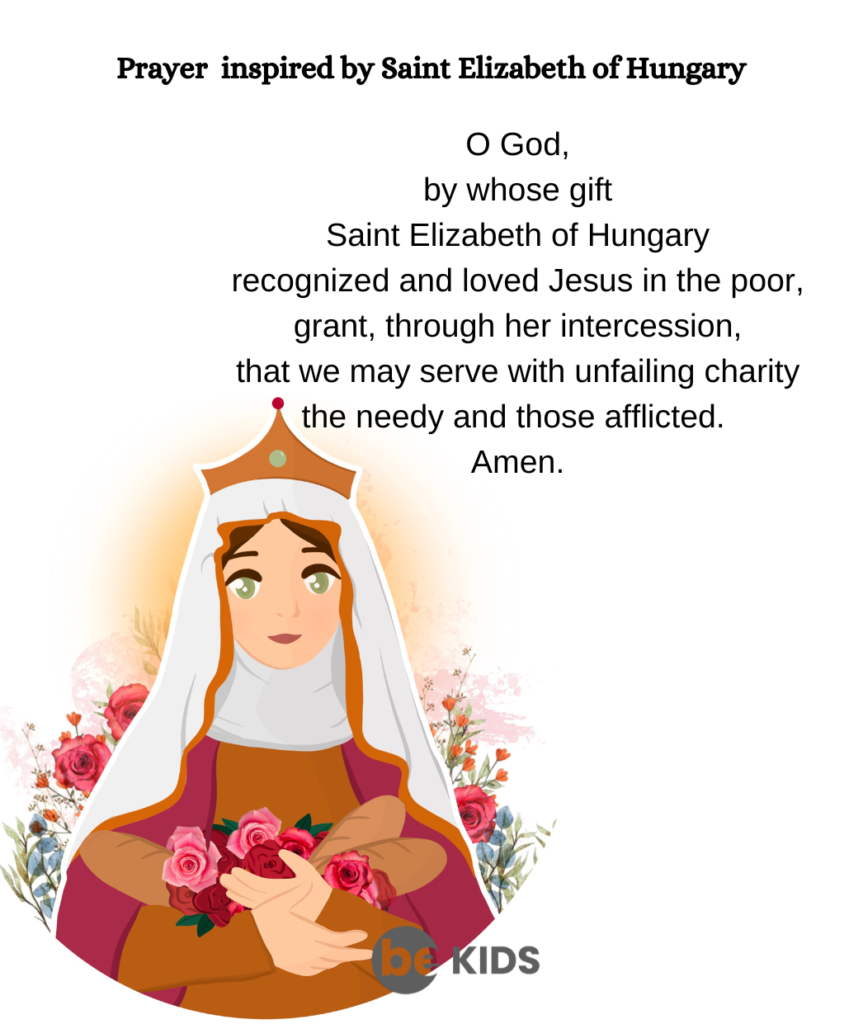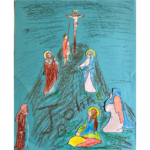
At first glance the life story of St.Elizabeth of Hungary, starts with a promise of a fairy tale! It is a story of a beautiful princess, who lived in a castle surrounded by the riches typical of the Middle Ages.
She was born in Hungary on the 7th July 1207. Her father was King Andrew ll of Hungary and her mother Gertrude of Merania. As was customary with the nobility of those times, when she was only four years old, a marriage was arranged between Elizabeth and Ludwig lV, a German nobleman of Thuringia. At that tender age, she was taken away to the court of Thuringia for her education.
When she was six years old, she had the first tragic experience of her life, when her mother was murdered, most probably by Hungarian nobles. She found happiness once more when she was married to Ludwig, whom she had grown to love. She was fourteen years old, Ludwig twenty-one. It was a happy marriage. Even though the wife of one of the wealthy and powerful rulers of Thuringia and forming part of the royal court, she led a simple life, dedicated to prayer and penance and to works of charity. Every day she took bread and clothing to the poor people. She was even accused by some noblemen of giving away goods from the palace to be distributed to the needy, but Ludwig supported her works of charity.
In 1223 the Franciscan Friars arrived in Thuringia. Elizabeth could identify with the Franciscan ideals of poverty and charity to the needy as she strived to mirror her life on that of St. Francis. When in 1226 Thuringia experienced widespread famine, disease and floods , Elizabeth herself cared for the victims, to the point of having a hospital built close to the palace.
In 1227, Ludwig accompanied Emperor Frederick ll on a Crusade to Palestine, responding to the call of the Pope, to claim territories in the Holy Land from the Muslims. However Ludwig caught the pestilence and died on the way there at Otranto. Elizabeth received the news just after giving birth to her third child. She was only twenty years old.
Her life then changed drastically.
She was accused by her brother-in-law that she was not competent to govern and he declared himself the true heir to her husband. She was prevented from inheriting any of the wealth that was due to her after the death of her husband. She found refuge in the family’s castle, worked as a seamstress and even continued to take care of the poor and the sick. In the meantime her children were taken away from her on the pretext that she was not in a position to take care of them.
In 1228, she joined the Third Order of St.Francis, instituted by St. Francis, for lay people who wanted to follow the Franciscan ideal without becoming friars or nuns. When she eventually received her dues from her dowry, she distributed part of it to the poor and with the rest she founded a hospital in honour of St. Francis, where she herself attended to the sick, with all her strength and energy.
She passed on to eternal life when she was twenty-four years old.












